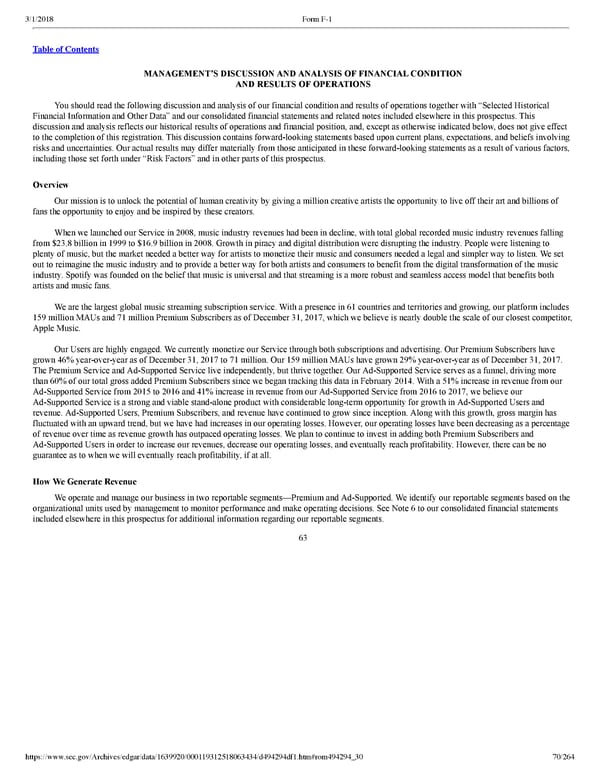70/264 MANAGEMENT’S DISCUSSION AND ANALYSIS OF FINANCIAL CONDITION AND RESULTS OF OPERATIONS You should read the following discussion and analysis of our financial condition and results of operations together with “Selected Historical Financial Information and Other Data” and our consolidated financial statements and related notes included elsewhere in this prospectus. This discussion and analysis reflects our historical results of operations and financial position, and, except as otherwise indicated below, does not give effect to the completion of this registration. This discussion contains forwardlooking statements based upon current plans, expectations, and beliefs involving risks and uncertainties. Our actual results may differ materially from those anticipated in these forwardlooking statements as a result of various factors, including those set forth under “Risk Factors” and in other parts of this prospectus. Overview Our mission is to unlock the potential of human creativity by giving a million creative artists the opportunity to live off their art and billions of fans the opportunity to enjoy and be inspired by these creators. When we launched our Service in 2008, music industry revenues had been in decline, with total global recorded music industry revenues falling from $23.8 billion in 1999 to $16.9 billion in 2008. Growth in piracy and digital distribution were disrupting the industry. People were listening to plenty of music, but the market needed a better way for artists to monetize their music and consumers needed a legal and simpler way to listen. We set out to reimagine the music industry and to provide a better way for both artists and consumers to benefit from the digital transformation of the music industry. Spotify was founded on the belief that music is universal and that streaming is a more robust and seamless access model that benefits both artists and music fans. We are the largest global music streaming subscription service. With a presence in 61 countries and territories and growing, our platform includes 159 million MAUs and 71 million Premium Subscribers as of December 31, 2017, which we believe is nearly double the scale of our closest competitor, Apple Music. Our Users are highly engaged. We currently monetize our Service through both subscriptions and advertising. Our Premium Subscribers have grown 46% yearoveryear as of December 31, 2017 to 71 million. Our 159 million MAUs have grown 29% yearoveryear as of December 31, 2017. The Premium Service and AdSupported Service live independently, but thrive together. Our AdSupported Service serves as a funnel, driving more than 60% of our total gross added Premium Subscribers since we began tracking this data in February 2014. With a 51% increase in revenue from our AdSupported Service from 2015 to 2016 and 41% increase in revenue from our AdSupported Service from 2016 to 2017, we believe our AdSupported Service is a strong and viable standalone product with considerable longterm opportunity for growth in AdSupported Users and revenue. AdSupported Users, Premium Subscribers, and revenue have continued to grow since inception. Along with this growth, gross margin has fluctuated with an upward trend, but we have had increases in our operating losses. However, our operating losses have been decreasing as a percentage of revenue over time as revenue growth has outpaced operating losses. We plan to continue to invest in adding both Premium Subscribers and AdSupported Users in order to increase our revenues, decrease our operating losses, and eventually reach profitability. However, there can be no guarantee as to when we will eventually reach profitability, if at all. How We Generate Revenue We operate and manage our business in two reportable segments—Premium and AdSupported. We identify our reportable segments based on the organizational units used by management to monitor performance and make operating decisions. See Note 6 to our consolidated financial statements included elsewhere in this prospectus for additional information regarding our reportable segments. 63
 Spotify F1 | Interactive Prospectus Page 69 Page 71
Spotify F1 | Interactive Prospectus Page 69 Page 71